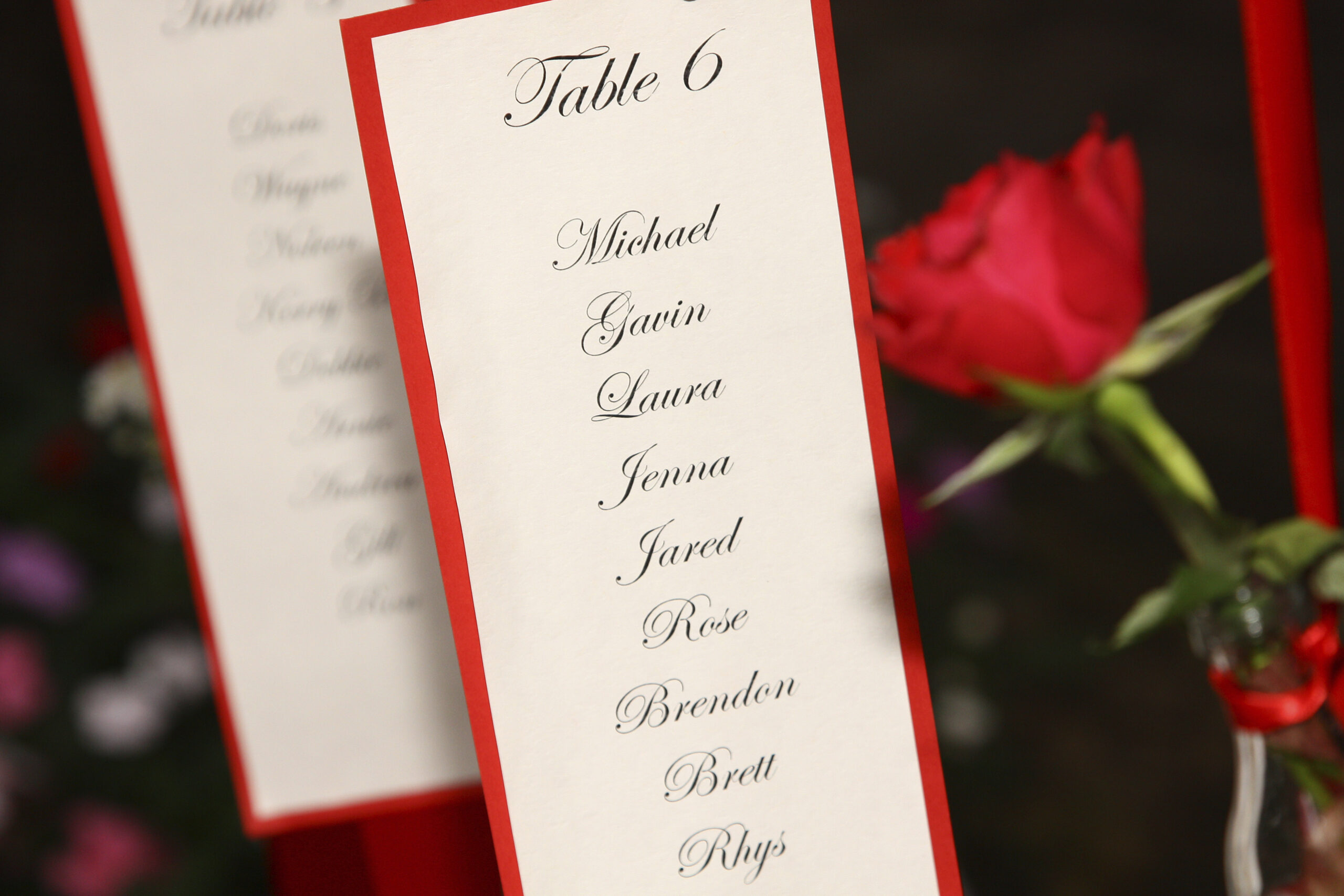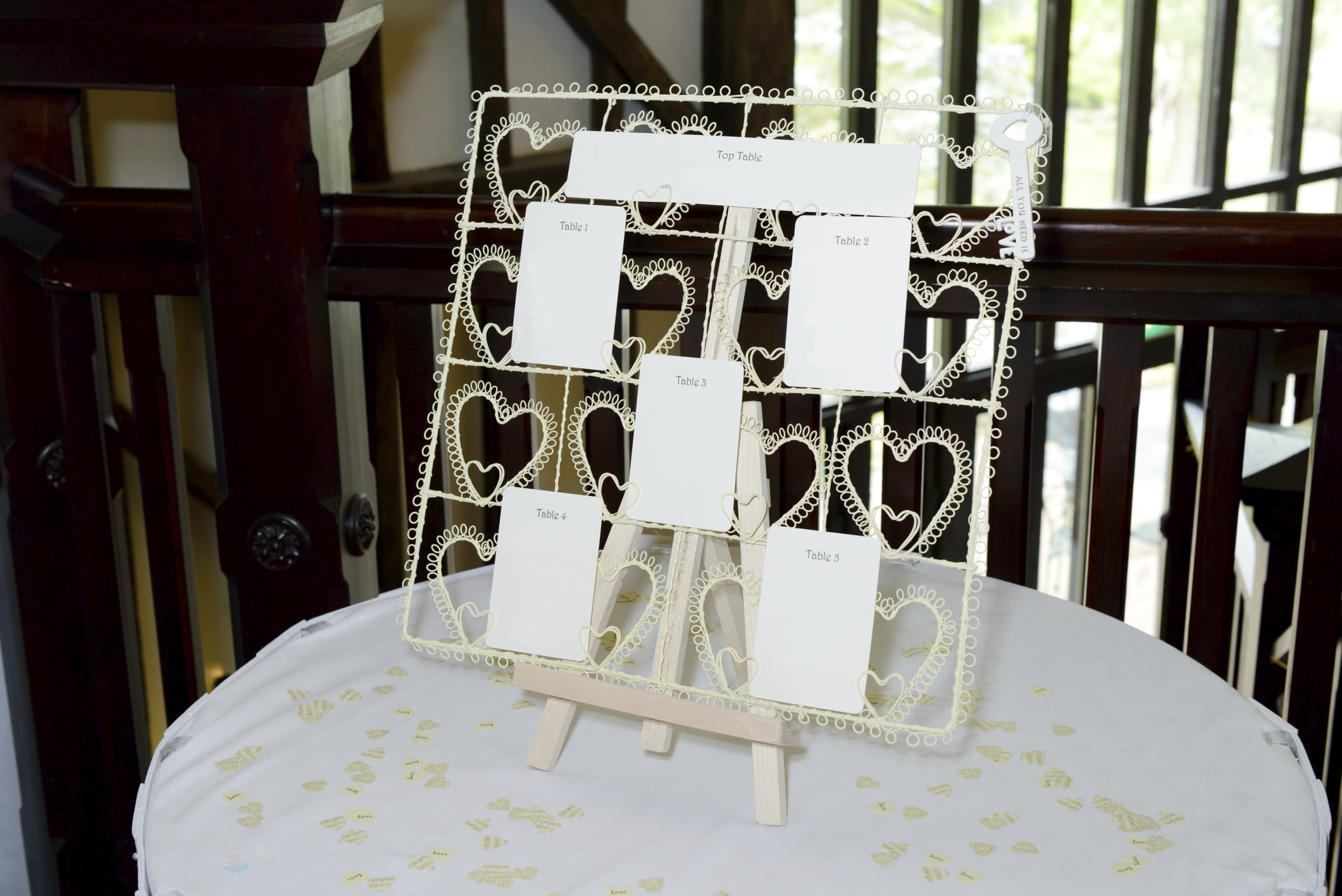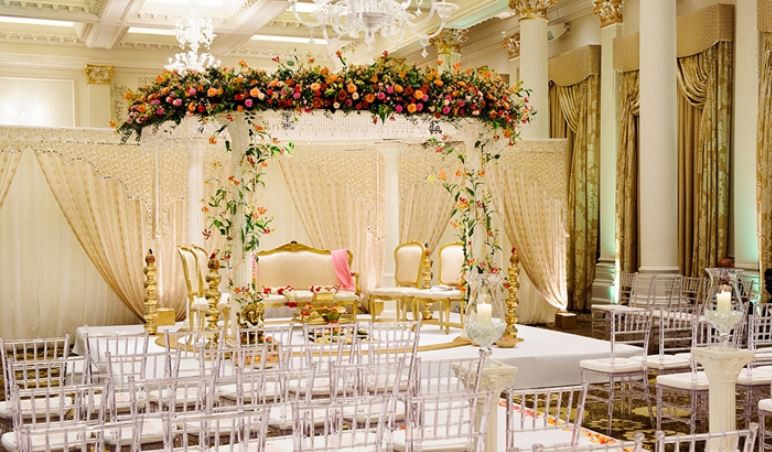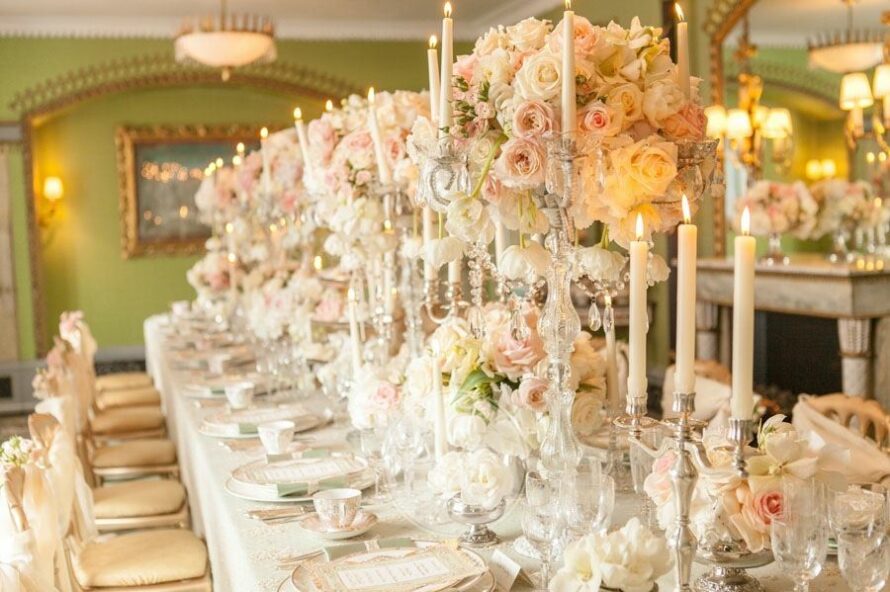The bigger your families are, the more trouble you will probably have deciding who sits where at your reception. Whether you are concerned about mixing your clans or reigniting past feuds you will need to think carefully about your wedding reception seating plan. Here are a few tips on putting together your plan.
Assigning seating – or not?
By assigning everyone a seat you reduce the chance of offence being caused when someone saves a seat, or a scramble as everyone hurries to secure the best seats in the house. Indeed by giving all your guests a specific place you can also cater for guests with specific needs. A less stringent way of deciding on a seating plan is by assigning everyone a table but letting them choose where they sit at it.
Coping with family disputes
Like all couples you will probably have to negotiate sensitive family issues when planning your reception seating plan. You might be inviting divorcees and their new partners, or relatives that no longer talk to each other after a family row that nobody really understands. In such situations, keep the two parties as far away from each other as logistically possible, though do ensure that they are an equal distance from the top table. You don’t want it to seem that you are taking sides!
Mixing the bride and groom’s families
It is absolutely acceptable to mix your two families as the aim of a reception seating plan is to have people with mutual interests enjoy each other’s company and to get to know each other for when they meet up again in the future.
So, make sure that around each table are people with shared interests and hobbies, or of a similar age range. Often this is more important than keeping the family groups together. Should you want to separate the families consider utilising long banquet style tables, one for the bride’s side and one for the groom’s, rather than smaller round tables.
Having couples sit together
While couples don’t have to sit next to each other, it is considered proper for them to at least be sitting at the same table. Tradition says that only engaged couples should sit next to each other though this isn’t a set rule. It’s important to treat each couple on an individual basis; they may have young children to contend with, or spend most their week apart due to long working hours. Such families would probably prefer to sit together.
Splitting up friendship groups
As your pals will have plenty of time to mingle after the meal, it is definitely fine to divide up a friendship group over many tables. Indeed, putting a couple of outgoing mates on each table will give the atmosphere a boost, and is preferred to having one raucous table amongst many deathly quiet ones.
Knowing where to seat children
It is always worth considering having a special children’s table for older kids with activities such as colouring which are useful in keeping the children entertained longer than dry adult conversation. Be sure to serve the children their food at this table too. Younger kids such as babies and toddlers are best kept with their parents, with you ensuring that there is room for a high chair at the parents’ table.
Seating guests with special needs
Always consider whether or not you need extra space or special arrangements for guests who may be disabled or pregnant. Maybe some of your guests would feel more comfortable being placed close to the bathroom. Naturally, those who have impaired vision or are hard of hearing will need to sit nearer the top table, while those with dietary requirements should be assigned seats where the waiting staff can easily find them.
There are many different things to think about when writing up a wedding seating plan, but never lose focus of the fact that this is your big day and should be how you would want it to be. You will need to adapt your wishes to the size and shape of your venue but otherwise the seating plan is down to you.




